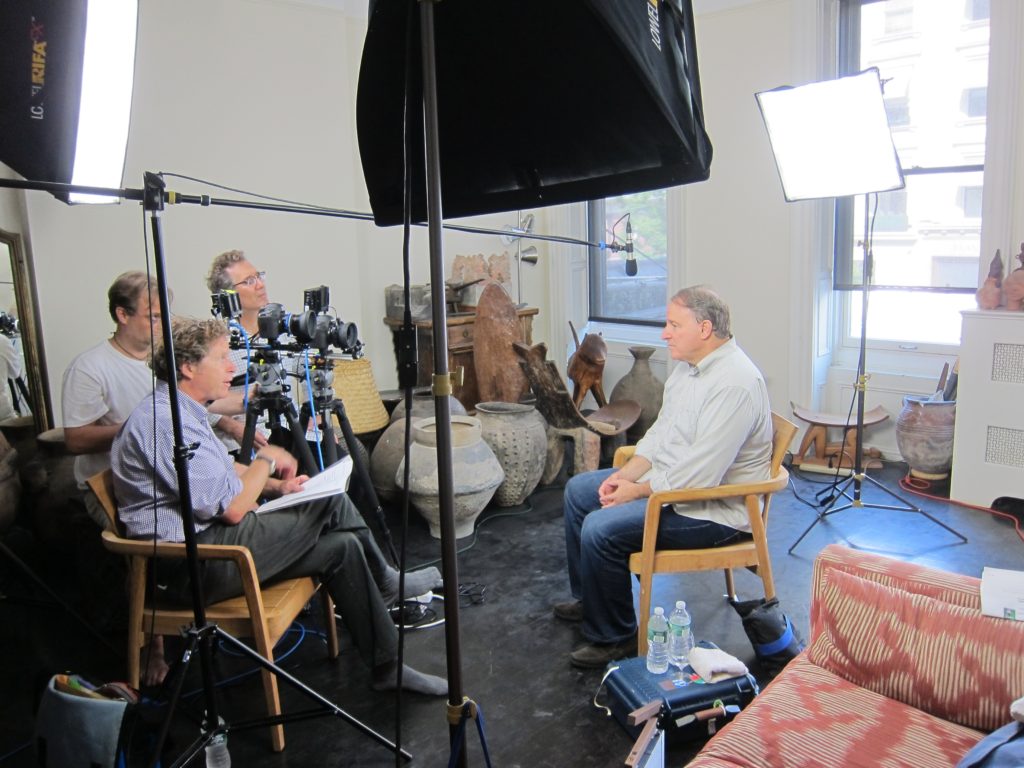 The Interview is one of the fundamental modes of storytelling (what can you tell me about…?) and, yet, one of the most under-rated and, thus, under-examined skills to be mastered by creative producers and directors.
The Interview is one of the fundamental modes of storytelling (what can you tell me about…?) and, yet, one of the most under-rated and, thus, under-examined skills to be mastered by creative producers and directors.
Charming/cajoling/extracting information or stories from someone on camera is an art – with as many possible approaches as practitioners – but there a few basic guidelines to keep in mind – particularly, if you decide (perhaps, for effect) to ignore them or do the opposite – to enhance your chances of getting good material from your interview:
1. Prepare. You should have both a good grasp of what your subject would expect you to know about them and, if possible, some inside info that may reveal unexpected areas to explore or avoid, a clear sense of what you want to get out of the interview and a series of questions that trace some kind of strategic (logical, emotional, chronological…) trajectory.
2. Internalize your preparation. To a large degree, good interviewing is improvisation. You know what you know and you’ve designed the trajectory of your questions so that it either has a natural flow or you’ve memorized the pivot points. You need, as much as possible, to be “off-book”.
3. Eye contact. Always. Never look away from your subject and try hard not to look at your notes (see Internalize). Eye contact is one aspect of being an active listener; also, (appropriate) head movements and facial expressions that let your subject know that you are not only listening but completely engaged with every single thing they are saying.
4. What’s my eyeline? Just as eye contact is a critical connection between the interviewer and the subject, the eyeline (where the subject is aiming their response relative to the camera) is critical for connecting to the viewer. In most cases, if the subject is speaking directly to the viewer (as in “I am talking to you”), the eyeline should be directly into the camera lens (directly at the viewer). If the subject is not talking directly to the viewer but, rather, the viewer is observing the subject as he/she talks, then the eyeline should be off-camera. How far off-camera is a matter of style but, because eyes are so powerfully revealing and engaging, the off-camera eyeline is typically as close as possible to the side of the camera lens. There is an epidemic of off-kilter eyelines in today’s media as producers fall in love with multi-camera shoots and crazy angles on the subject. We must all do our part to end the madness.
5. Empower your subject. Remind them (if true) that the interview will be edited and that they can start and stop, reframe questions, request new questions – they don’t have to deliver perfect responses, they have the power to take their time, collect their thoughts and try out responses until they’re satisfied. Subjects rarely use this power but it helps them relax in the glare of the lights and unblinking gaze of the camera (and you).
6. Have a conversation. Ideally, the interview is a seemingly unstructured conversation that organically produces the material you need from genuine curiosity and natural connections between topics. Forget your prepared questions! Follow what’s interesting in the response you just heard. That’s the path to gold.
7. Shut up. The documentary genius Errol Morris said, “I had this three-minute rule that if you just shut up and let someone talk, within three minutes they will show you how crazy they really are.” If you’re familiar with Morris’s work you know how successful this approach has been but it’s not just about giving space for craziness to appear, it’s about giving your subject time and space and getting out of the way of their story. Keep your questions short and succinct and follow, intently, as the response unspools.
8. Record early & late. Unless you’ve agreed to restrictive parameters around the interview recording, get camera and sound recording as soon as the subject enters the “set” and keep recording until they are out of earshot. Amazing things are said and done when people don’t think the camera is on (see STARBOX).
